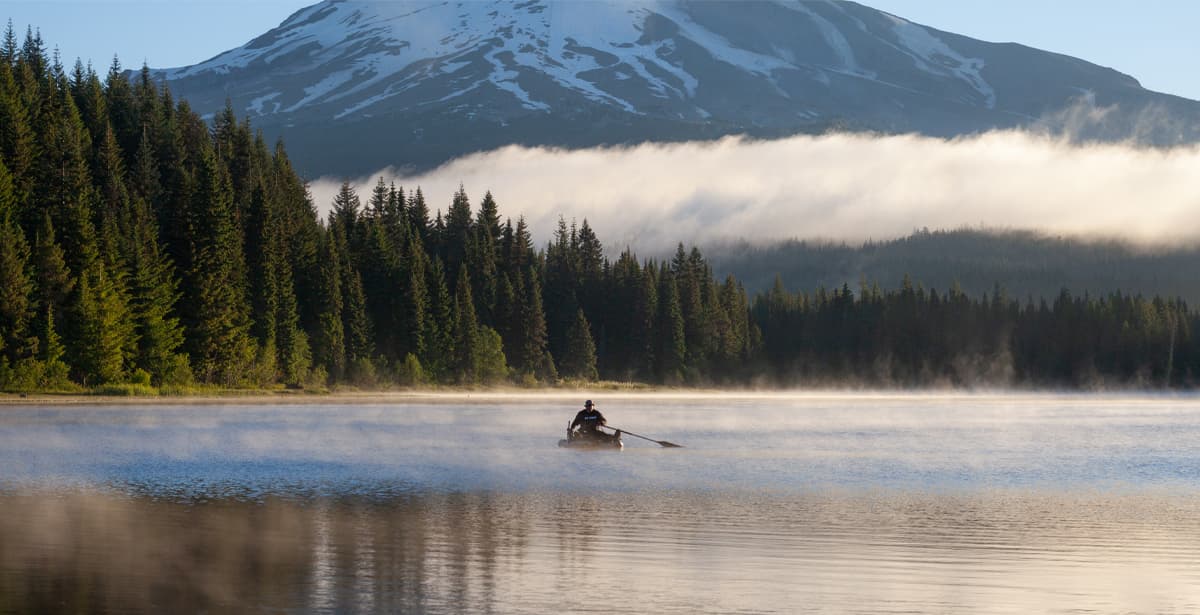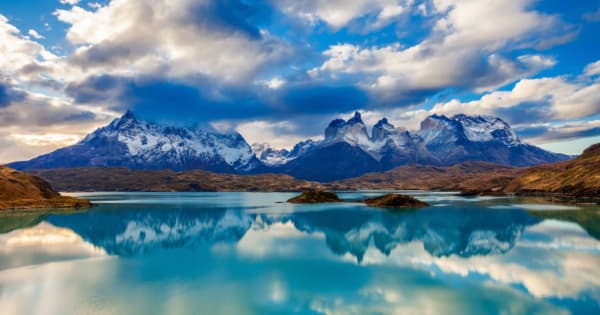Tips To Stay Safe When Paddling At High Elevation
Tips To Staying Safe When Paddling At High Elevation

It’s nearly impossible to find a body of water that hasn’t been explored in a paddling vessel at this point in history. Even hidden turquoise lagunas in the high mountains are now becoming popular destinations for adventure-seeking paddlers. Paddling in these isolated and brilliant blue mountain waters is exhilarating, but you must take certain additional precautions when you paddle at high elevations.
Before you paddle in waters at high altitudes you must take a day or two to acclimate. Listen to your body when paddling, and take conscious breaths to ensure you get enough oxygen. Stay hydrated, and wear strong sun protection for your eyes and skin. Take slow strokes, and make sure your first route is short, then slowly build up your high-elevation stamina over time.
There are many instances where you can find yourself with the thrilling opportunity to paddle high above sea level - whether it’s kayaking at the end of an epic hike in the Andes, or visiting one of the many adventure capitals located above 15,000 feet. Before you grab your paddle at high altitude, however, make sure you read through the safety tips below to ensure your high-elevation paddle is as safe as it is exciting.
12 Safety Tips To Remember When Paddling At High Elevation

1. Take The Time To Acclimate
When you arrive in a high-altitude location, you must take the time to acclimate. This is especially important if you arrive by plane or bus from an area of much lower altitude. Your lungs and the rest of your body require time to adjust to the lower levels of oxygen and pressure at high altitudes.
You may not notice a change when you are sedentary or walking on flat surfaces. As soon as you start exerting energy, however, it will quickly become difficult to breathe. Allow yourself at least 24 to 48 hours before you exert yourself on a paddling vessel at a high altitude.
2. Start With A Slow And Easy Paddle
Since it takes time to get used to altitude, make your first paddle a casual one. Choose a route that is easier than something you would do at a lower elevation. Ideally, the route should remain close to shore in protected waters.
The goal is to get your body used to the idea of exerting itself on the water at high elevation. You may need to take frequent breaks to catch your breath. This is why staying close to shore, and knowing nearby landing locations is smart when embarking on your first high-elevation paddle.
3. Focus On Your Breathing
Your lungs take the bulk of the brunt when you exercise at altitude. This organ receives significantly less oxygen each time you breathe at these heights, which means they must work much harder. In turn, your body may feel deprived of oxygen. Focus on your breathing technique, and make conscious and consistent deep breaths. This is a great way to ensure you stay calm and get as much oxygen into your body as possible. It also helps you quickly realize when it is time to slow down or take a break.
4. Use Slow And Mindful Paddling Strokes
Since your body won’t be used to high altitudes, start with slow and steady paddling strokes. Just as hikers take slow and small steps when hiking at altitude, you must also adjust your paddling pace.
Paddling with a deliberate pace is a great way to avoid over-exerting yourself when paddling at altitude. As time goes on, you can slowly increase your speed and paddling strength.
5. Listen To Your Body
As you focus on your breath, you also should listen to your body. You will notice your heart beating faster than normal when you paddle. This is because it is working harder to pump oxygen into your body. Slow down when you notice your heart racing.
Altitude sickness can come on quickly and strongly. Symptoms include headache, muscle aches, dizziness, and nausea. If you have any of these symptoms, take a breather, cut your paddling route short and return to shore.
6. Dress For The Water Temperature
When you paddle at high elevation there is a good chance the waters you are exploring are fed by melting snow or even glaciers. This also means the water temperature is likely just a few degrees above freezing.
On a sunny warm day in the mountains it can be quite tempting to dress light, but remember to dress for the water temperature and not the air temperature. You are bound to feel much colder when paddling in frigid waters than you are on shore. Wear materials that are ideal for paddling, and wear cold-weather paddling gear.
7. Wear Reliable Sun Protection
Remember the higher up you are, the thinner the atmosphere is. This means the sun’s rays are much stronger, and the risk of sun damage increases significantly. Wear ample sun protection while paddling, including UV-protectant clothing, and strong, waterproof SPF.
Remember you also need to protect your eyes from the powerful UV rays. The strong sunlight and its reflection on the water can damage your eyes. Wear sunglasses with proven UV protection.
8. Gradually Increase Your Paddling Speed And Route
If you want to push yourself to paddle further and faster, do so in increments. Don’t go from zero to 100 in one day, or assume because a casual paddle went well that you are ready for a multi-day high-elevation paddling route.
Time and slow progression are the best ways to prevent altitude sickness and severe consequences. Remember that higher in elevation you go, the more time your body needs to adjust.
9. Seek Out Tranquil Waters And Favorable Conditions
Just as you should map out a safe paddling route when you first start paddling at high altitudes, you should also seek safe conditions. The ideal paddling conditions for those still acclimating to high altitude are protected waters with plenty of landing areas.
Check the weather before you paddle, and scope out the shoreline for various safe havens if you need to catch your breath. High altitude often means high winds. Try to choose locations or times of day (and year) when winds are less extreme.
10. Stay Hydrated
Hydration is always important when paddling, but it plays an additional crucial role when paddling at high elevations. Drinking plenty of fluids can go a long way to mitigate some of the worst symptoms of altitude sickness. The symptoms water intake can reduce include headaches and muscle aches.
Drink at a slow and consistent pace before, during, and after your high-elevation paddling excursions. Keeping your water close and in an easily accessible location on your paddling vessel is a great way to ensure you stay hydrated.
11. Enjoy The Unique Views And Experience
Exploring majestic lagunas and glacial rivers at altitude is a unique and engrossing way to enjoy the world’s highest-elevation regions. Make sure you factor in enjoying these unique vistas into your paddling plans.
Remember that paddling in a laguna 15,000 feet above sea level is already an epic experience - so try to place more emphasis on enjoying the views as you paddle through glacial waters, and less on exerting lots of energy.
12. Take Time To Recover Between Paddles
After each high-elevation excursion, it’s a good idea to take a break before your next heart-pumping adventure. Try to allow at least one day of rest between paddling trips, especially if you plan to increase your speed and distance each time.
Time allows your body to recover, and time improves your ability to thrive in high-elevation situations. Since muscles and headaches are symptoms of elevation sickness, allowing your sore muscles a little extra time to heal will ensure you always feel your best.
Final Notes On Staying Safe When Paddling At High Elevation
Taking a kayak, canoe, or SUP board out on a glacial lake, or mountainous lagoon is an experience every paddler should enjoy when visiting a high-elevation paddling destination. Still, with these rewarding views comes some risk. Elevation sickness is a very real and potentially dangerous condition.
To ensure you stay safe when paddling at high elevations, allow yourself one or two days to acclimate, and opt for a short and easy paddling for your first excursion. Remember to dress for the water temperature, and wear UV-protective clothing. Listen to your body and be conscious of your breath. Slowly increase your paddling speed over time, and allow yourself a day to recover between high-altitude paddling adventures.